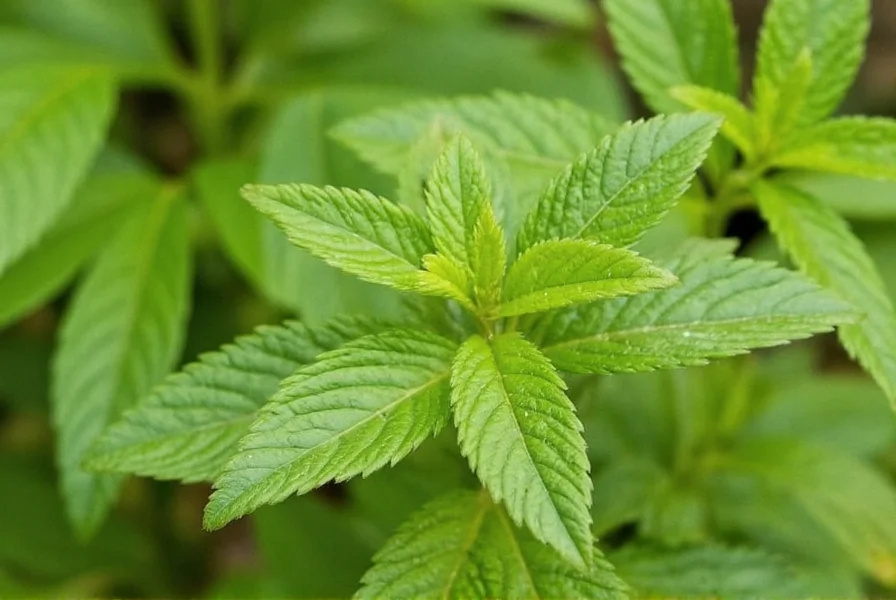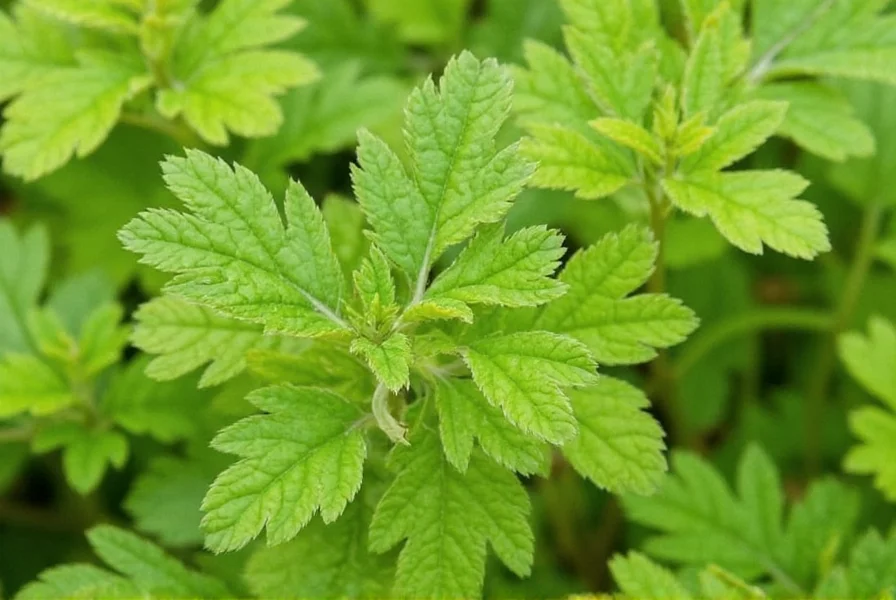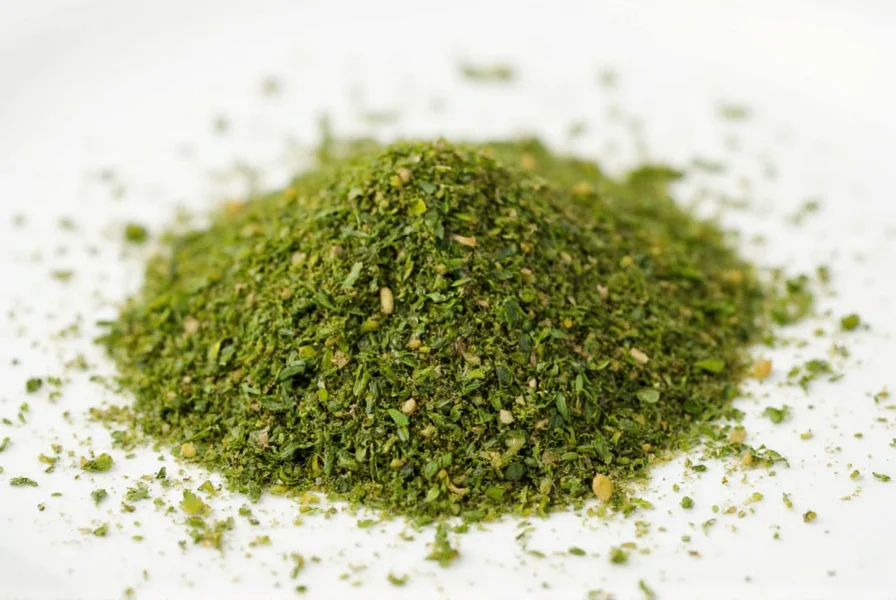Often confused with parsley due to its similar appearance, chervil (Anthriscus cerefolium) offers a more nuanced culinary experience. This annual herb features finely divided, fern-like leaves with a distinctive mild anise or licorice undertone that sets it apart from its more common cousin. While parsley delivers a grassier, more robust flavor, chervil's subtlety makes it indispensable in delicate preparations where overpowering herbs would dominate.
Understanding Chervil's Unique Flavor Profile
Chervil's flavor profile represents one of the most delicate among culinary herbs. When evaluating what is chervil spice in practical terms, consider these key characteristics:
| Characteristic | Description |
|---|---|
| Primary Flavor | Subtle anise with mild licorice notes |
| Intensity | Delicate (less intense than tarragon) |
| Heat Sensitivity | Loses flavor quickly when cooked |
| Best Applications | Raw preparations, finishing dishes |
The herb's volatile oils contain estragole, which gives chervil its characteristic anise flavor but dissipates rapidly with heat exposure. This explains why professional chefs consistently add chervil at the very end of cooking or use it exclusively in raw applications. Understanding this heat sensitivity is crucial when exploring how to use chervil in cooking effectively.

Historical Significance and Culinary Heritage
Chervil's history traces back to ancient Greece and Rome, where it was valued both culinarily and medicinally. The Romans believed chervil could ward off_ComCallableWrapper and improve eyesight, while medieval Europeans used it to treat respiratory ailments. However, it was in France where chervil found its true culinary home, becoming one of the foundational fines herbes in classic French cuisine during the 19th century.
The term "French herb chervil" isn't merely descriptive—it reflects the herb's integral role in French culinary tradition. Unlike more aggressive herbs that dominate dishes, chervil's subtlety complements rather than overwhelms, embodying the French culinary philosophy of balance and refinement. This delicate approach explains why chervil remains essential in dishes like fines herbes omelette, beurre maître d'hôtel, and salade verte.
Practical Culinary Applications
When incorporating chervil into your cooking, consider these professional techniques for maximizing its delicate flavor:
- Sauces and Dressings: Add fresh chervil to béarnaise, hollandaise, or vinaigrettes just before serving
- Egg Dishes: Mix into omelettes, frittatas, or scrambled eggs during the final minute of cooking
- Seafood Enhancements: Sprinkle over poached fish or incorporate into seafood sauces
- Vegetable Finishing: Toss with steamed asparagus, green beans, or new potatoes
- Herb Blends: Combine with equal parts parsley, chives, and tarragon for classic fines herbes
For those wondering what is chervil spice used for in professional kitchens, the answer lies in its ability to elevate dishes without dominating them. Unlike dried herbs that often lose their nuanced flavors, fresh chervil provides a bright, aromatic finish that dried versions cannot replicate. This explains why dried chervil rarely appears in quality restaurants—chefs prioritize fresh applications to preserve its delicate character.
Substitution Strategies When Chervil Isn't Available
Finding fresh chervil can be challenging outside specialty markets, leading many home cooks to seek alternatives. Understanding proper fresh chervil substitute options requires recognizing what aspects of chervil you're trying to replicate:
- For appearance only: Flat-leaf parsley works visually but lacks the anise notes
- For flavor approximation: Combine equal parts parsley and a tiny pinch of tarragon (use sparingly)
- For fines herbes blends: Omit chervil and increase other herbs proportionally
- Never substitute: Basil, cilantro, or dill—they create entirely different flavor profiles
When substituting, remember that chervil's magic lies in what it doesn't do—it doesn't overpower, doesn't dominate, and doesn't linger aggressively. The best chervil herb vs parsley approach involves using parsley as a base but reducing the quantity by 25-30% to approximate chervil's subtlety.

Growing and Preserving Chervil
For gardeners interested in cultivating this delicate herb, chervil presents specific challenges and rewards. Unlike hardier herbs, chervil prefers cool temperatures and partial shade, making it ideal for spring and fall cultivation. The plant bolts (goes to seed) quickly in hot weather, so understanding proper chervil growing tips is essential for continuous harvest.
When harvesting chervil, cut outer leaves first to encourage new growth from the center. For preservation, avoid drying—chervil's volatile oils evaporate too quickly. Instead, try these methods:
- Freeze in ice cube trays with water or olive oil
- Create herb-infused vinegar for salad dressings
- Store fresh stems in a glass of water (like flowers) in the refrigerator
- Wrap in slightly damp paper towels inside airtight containers
Properly stored, fresh chervil maintains quality for 5-7 days—significantly shorter than hardier herbs like rosemary or thyme. This limited shelf life explains why many home cooks struggle to find where to buy chervil consistently in standard grocery stores.
Nutritional Profile and Culinary Science
While primarily valued for flavor rather than nutrition, chervil does offer some beneficial compounds. It contains vitamin C, potassium, and small amounts of antioxidants. More importantly from a culinary perspective, chervil's chemical composition explains its unique behavior in cooking.
The herb's high water content (approximately 92%) and volatile essential oils mean it wilts quickly and loses flavor when exposed to heat. This scientific understanding informs why chefs consistently recommend how to use chervil in cooking only as a finishing herb. When heat breaks down chervil's delicate cell structure, the aromatic compounds evaporate rapidly—typically within 30-60 seconds of exposure to temperatures above 140°F (60°C).
Common Misconceptions About Chervil
Several myths persist about this delicate herb that deserve clarification:
- Myth: Chervil is just a fancy name for parsley
Fact: While visually similar, they're different plants with distinct flavor profiles - Myth: Dried chervil works well in cooking
Fact: Drying destroys chervil's delicate flavor compounds—always use fresh - Myth: Chervil and cilantro are interchangeable
Fact: They have completely different flavor profiles and culinary applications - Myth: Chervil is difficult to grow
Fact: It grows easily in cool conditions but bolts quickly in heat
Understanding these distinctions helps clarify what is chervil spice in practical culinary terms, separating fact from common misconceptions that often confuse home cooks.
FAQ: Frequently Asked Questions About Chervil
What is chervil spice actually made from?
Chervil spice isn't actually a spice but a fresh culinary herb (Anthriscus cerefolium). Unlike true spices that come from seeds, bark, or roots, chervil refers to the fresh leaves of this delicate annual plant. The confusion sometimes arises because chervil is one of the fines herbes in French cuisine, but it's always used fresh, never dried like traditional spices.
How does chervil differ from parsley in cooking applications?
While chervil and parsley look similar, they have distinct flavor profiles and culinary behaviors. Parsley has a grassier, more robust flavor that holds up to cooking, while chervil offers a delicate anise-like taste that disappears with heat. Chefs use parsley throughout cooking processes, but add chervil only at the very end or in raw applications. In French cuisine, chervil is considered more refined and is one of the fines herbes, whereas parsley stands alone.
Can I substitute dried chervil for fresh in recipes?
Dried chervil is generally not recommended as a substitute for fresh. The drying process destroys chervil's delicate volatile oils that provide its characteristic anise-like flavor. If you must substitute, use 1/3 the amount of dried chervil compared to fresh, but recognize the flavor profile will be significantly different. Better alternatives include a combination of parsley and a tiny pinch of tarragon to approximate chervil's flavor.
Where can I find chervil if my local grocery store doesn't carry it?
Chervil can be challenging to find in standard grocery stores due to its short shelf life. Your best options include farmers' markets (especially in spring), specialty food stores, herb nurseries, or growing it yourself. Many garden centers sell chervil seeds in early spring. Online herb retailers sometimes offer fresh chervil with expedited shipping, but quality varies. For consistent access, consider growing chervil in a cool, shaded garden spot or container.
Why is chervil called the 'gourmet's parsley'?
Chervil earned the nickname 'gourmet's parsley' because of its delicate flavor that professional chefs prize for subtle seasoning. Unlike regular parsley which has a more assertive taste, chervil offers a refined anise-like note that enhances rather than dominates dishes. This sophistication makes it a favorite among culinary professionals for finishing delicate sauces, egg dishes, and seafood preparations where stronger herbs would overwhelm the dish.











 浙公网安备
33010002000092号
浙公网安备
33010002000092号 浙B2-20120091-4
浙B2-20120091-4